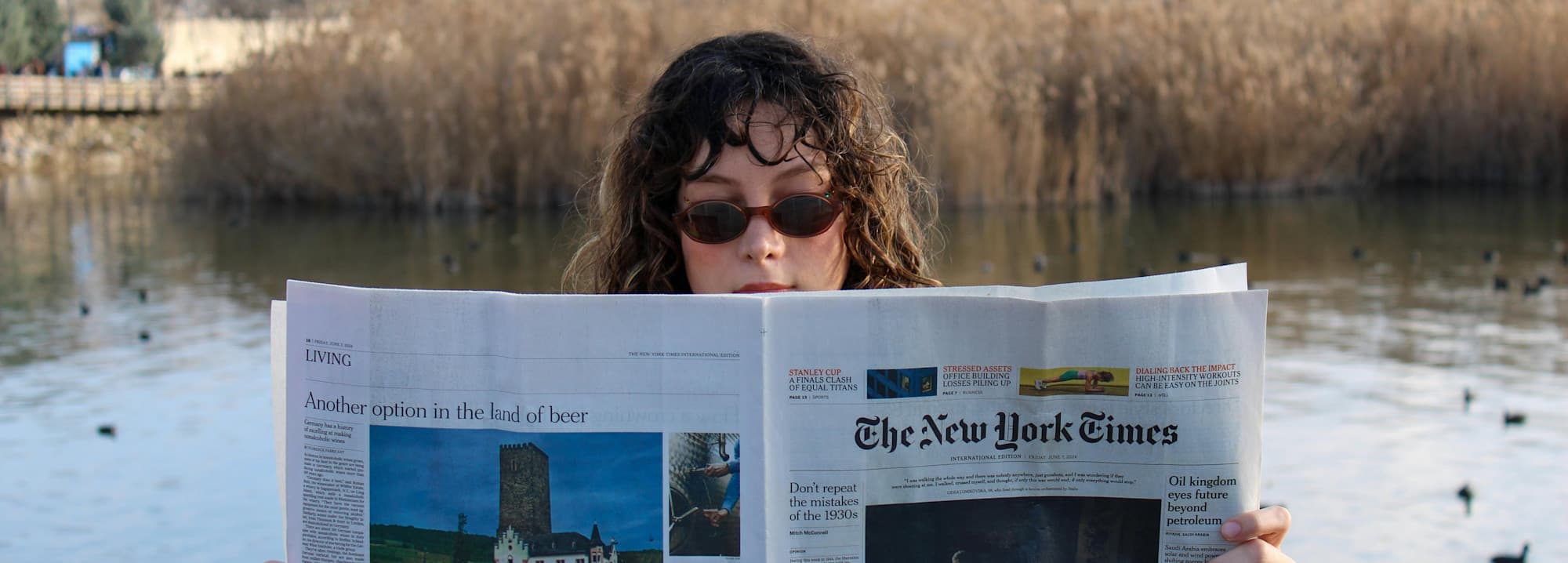
How to Write a Political Press Release That Gets Noticed
A strong political press release can give your campaign the attention it needs without the price tag of paid ads. Whether you’re launching your candidacy, announcing a key endorsement, or promoting an upcoming event, a press release is a proven way to get your story in front of voters and the media.
If you’ve never written one before, don’t worry. You don’t need to be a communications pro or hire a PR firm to get results. This guide will walk you through what a press release is, why it’s a must-have tool for local, nonpartisan, and Independent candidates, and how to write one that captures attention.
What Is a Political Press Release?
A political press release is an official statement your campaign sends to journalists, editors, or news outlets to announce something newsworthy. Think of it as your campaign’s way of saying, “Hey, this matters. Please cover it.”
You can use political press releases for:
Announcing your campaign launch
Sharing an endorsement
Promoting an event or rally
Highlighting a fundraising milestone
Responding to major news or policy developments
The goal is to give reporters everything they need to write a story quickly, clearly, and in a way that aligns with your campaign’s message.
Done well, a press release can help you build credibility with voters, expand your reach, shape how your campaign is perceived in the media, and drive more people to your website or events.
Remember that reporters get dozens of press releases every day. Making yours concise, relevant, and timely increases your odds of getting covered.
Why Press Releases Matter for Political Campaigns
Press releases aren’t just about publicity. They’re a low-cost way to gain traction, especially for grassroots and Independent candidates who don’t have access to big party PR machines.
Here’s why they work:
Earned Media Equals Credibility: A story in the local paper or on the evening news carries more weight than a paid ad because it comes from a trusted third-party source.
Built-In Audience: Local news outlets already have established readerships. A press release puts your message directly into the hands of potential voters you might not reach otherwise.
Reusable Content: Once your press release is out there, you can share the coverage on social media, in email newsletters, and in fundraising appeals.
Narrative Control: By proactively sending press releases, you’re deciding what stories get told about your campaign before your opponents do.
One well-crafted release can lead to multiple stories, interviews, and mentions across local media. Even if your press release doesn’t get picked up in full, it can put your campaign on reporters’ radar for future coverage. Over time, having a steady presence in the news can help position you as a credible, engaged candidate voters should take seriously.
LEARN MORE: Get seen with our PR strategy tips for Independent candidates.
How to Write a Political Press Release in 7 Steps
You don’t need insider media connections to write an effective press release. You just need to keep it professional, to the point, and centered on why it matters now.
Step #1: Choose Your Topic and Timing
Before you start writing, decide exactly what you’re announcing and when you’ll share it. The topic should be genuinely newsworthy, or something that would matter to voters or the community.
Common press release topics include:
Campaign launch announcements
Endorsements
Major fundraising milestones
Upcoming events or rallies
Responses to local news or policy changes
Quality matters more than quantity. Aim to send a press release only when you have a genuinely newsworthy update. Campaigns may have newsworthy updates every few weeks to once a month, but if you’re running a unique campaign, it could be more or less frequent. Flooding reporters with minor updates can make them tune out your messages, but staying silent for months at a time could make them forget your name.
Step #2: Start with a Clear Headline
Your headline is the first thing reporters will see, and it determines whether they keep reading. Make it short, specific, and focused on the news you’re announcing.
Keep it under 12 to 15 words if possible.
Avoid jargon or overly political language. Make sure it’s clear for anyone skimming their inbox.
Use action-oriented words (“Announces,” “Opens,” “Launches,” “Wins,” “Hosts”) so it feels timely.
For example: "Local Educator Jane Smith Announces City Council Bid to Champion Affordable Housing"
A good headline is like a door into your story. If it’s appealing and clear, reporters are far more likely to step inside.
Step #3: Lead with the News
The first paragraph should get straight to the point. Journalists need to know who, what, when, where, and why right away.
To make your lead effective:
In one or two sentences, answer the question: “What happened and why does it matter right now?”
Use plain language and avoid campaign slogans here; focus on the facts first.
Include the location and date at the very top so reporters know where the story is based.
Capturing interest here increases the chances of the rest of your release getting read.
Step #4: Add Context and Background
After you’ve stated the news, use the next few paragraphs to explain why it’s important and provide background details. This is where you connect the dots for the reporter.
You can include:
Relevant history, like whether you’re a first-time candidate or long-time community advocate.
How this announcement fits into your campaign’s goals or the broader political conversation.
Short, factual statements that give the story depth without overwhelming the reader.
By the end of this section, a reporter should feel confident they have enough context to explain why your announcement matters.
LEARN MORE: Start building a media strategy for your campaign early so your press releases are mapped out in advance.
Step #5: Include a Strong Quote
A well-crafted quote gives the release personality and helps reporters capture your voice. It’s also your chance to speak directly to voters, even in a third-person format.
Keep in mind:
Use this space to share your values, motivations, or personal connection to an issue.
Avoid generic statements, like “I’m honored to run for office.” Be specific.
You can also include a second quote from a supporter or community leader to add credibility.
A great quote can make your release memorable, and quotes often end up being the line that gets printed or aired.
Step #6: Keep It Concise and Professional
Even with added details, a press release should generally be one page, around 300 to 500 words. Reporters appreciate brevity, especially when working on tight deadlines.
To keep your release tight and readable:
Use short paragraphs and simple language.
Avoid excessive adjectives or campaign rhetoric; save that for speeches.
Write in the third person, as if you’re an objective reporter covering the news.
When in doubt, remember: clear and concise beats clever and complicated.
Step #7: End with a Clear Call to Action and Contact Info
Your press release should close by telling readers exactly what to do next, and by making it easy for journalists to reach you.
Be sure to:
Include your campaign website link, social media handles, and any event RSVP links.
List your media contact name, phone number, and email in an easy-to-find spot.
Mention if you’re available for interviews or can provide high-quality photos.
A strong ending makes your release actionable and ensures no opportunity for follow-up is missed.
LEARN MORE: Want help getting started? Use our free press release generator to get your name in the news.
Example Press Release Template for Political Campaigns
This sample follows the steps we covered earlier, so you can see exactly how to structure your own. You can use it as a guide and swap in your own details, quotes, and links.
Release Line: This line tells reporters they can publish the story right away. Put it at the top, in all caps. Include the date below it, too.
Example:
FOR IMMEDIATE RELEASE
August 13, 2025
Headline: A short, news-focused sentence that sums up your announcement.
Example:
Local Educator Jane Smith Announces City Council Bid to Champion Affordable Housing
Dateline & Lead: Beginning with your city and state, this is the first paragraph that answers who, what, when, where, and why right away.
Example:
[Springfield, IL] — Jane Smith, a lifelong Springfield resident and local high school teacher, officially announced today that she is running for Springfield City Council in Ward 3. Smith’s campaign will focus on expanding affordable housing, improving public transit, and supporting small businesses across the city.
Background and Context: A short paragraph or two explaining why this is important and providing relevant background information.
Example:
Smith, 38, has taught history at Lincoln High School for more than a decade and has served on the board of the Springfield Community Housing Alliance. She decided to run for office after hearing from students, parents, and neighbors about the rising cost of housing and lack of accessible transportation options.
Quote: A personal, specific statement from the candidate that reflects your passion and values.
Example:
“Springfield families are being priced out of their own neighborhoods, and that’s not the future I want for our city,” said Smith. “I’m running for city council to make sure every resident has the opportunity to live, work, and thrive right here at home.”
Event or Action Details: Tell people what’s happening next or how they can get involved.
Example:
The campaign will kick off with a community launch event on Saturday, August 19, at Washington Park from 2 to 4 p.m. The event is open to the public, and attendees can meet Smith, ask questions, and sign up to volunteer.
Smith has already received endorsements from the Springfield Teachers’ Association and several neighborhood leaders. More information about her platform, upcoming events, and ways to get involved is available at www.JaneSmithForCouncil.com.
Media Contact: Tells reporters exactly who to reach out to for more details.
Example:
Alex Johnson
Campaign Manager, Jane Smith for City Council
Phone: (555) 123-4567
Email: press@janesmithforcouncil.com
Website: www.JaneSmithForCouncil.com
LEARN MORE: Press releases are just one way to get noticed. Explore more ways to increase your campaign’s visibility.
How to Send a Political Press Release
Writing a strong press release is only half the job. Getting it into the right hands is just as important. Most modern press releases are sent by email, but you can also hand out printed copies at in-person events or post them online for broader reach.
Here’s the simplest way to send one:
Find the right journalists. Look at your local newspapers, radio stations, TV stations, and community news sites. Check the “About Us” or “Contact” pages for reporters who cover politics, local government, education, or community events. You can also search recent articles on similar topics and note the bylines. Those journalists are most likely to be interested in your news.
Use email as your main method. Paste the press release directly into the body of the email so reporters don’t have to open an attachment to read it.
Write a clear subject line. Use your headline or a slightly shorter version so the news is obvious at a glance. Example: “Local Educator Jane Smith Announces City Council Bid to Champion Affordable Housing.”
Attach a copy for reference. Include a Word or PDF file as a backup, but never send the release as an attachment only.
Include contact info. Make sure your name, phone number, and email are visible at the top or bottom of the email.
BCC your media list. Sending one email to multiple reporters is fine, but remember to use BCC to protect their privacy.
Follow up. If your story is time-sensitive, call or email reporters within 24 hours to make sure they saw it.
Printed copies are optional, but they can be useful if you’re holding a press conference, attending a candidate forum, or meeting with reporters in person. Posting the press release on your campaign website or social media also gives you a public link to share with supporters and voters.
LEARN MORE: Explore more ways to get media coverage for your campaign.
When You Should Send a Press Release
Timing is everything. Send out a quick press release when your news is most relevant and when journalists are most likely to see it:
A few days before an event. This gives reporters enough time to plan coverage and lets the public hear about it in advance.
The morning of a big announcement. If you’re launching your campaign or revealing a major endorsement, aim for mid-morning, around 9-11 a.m., when reporters are checking emails and planning their day.
In response to breaking news. If a local issue or event connects to your platform, act fast. Sending a release within a few hours shows you’re paying attention and have a relevant perspective.
Timed with other posts and emails. Whenever possible, coordinate your press release with social media posts and email announcements to maximize your reach.
Avoid dead zones. Fridays after 3 p.m., weekends, and the day before major holidays are when fewer reporters are looking for new stories. Your news is more likely to get buried.
In short, send your press release when the story has the best chance to be timely and useful to a reporter. And remember: sending a follow-up email or calling the day after can help ensure it doesn’t get overlooked.
Your Campaign’s Story Deserves to Be Told
A political press release is a powerful tool for building your reputation, reaching new voters, and shaping the public conversation around your race. For grassroots and Independent candidates, it can level the playing field by getting your message in front of people who might not otherwise hear it.
Now that you know how to write and send a press release, you don’t have to stare at a blank page or wonder if you’re doing it right. GoodParty.org’s free press release generator empowers you to put together a professional, on-message press release in minutes.
You’ll also get access to other tools that can make your campaign stronger, including:
Social media content templates to boost your online presence
Email and text outreach tools to connect with voters directly
A custom voter report for your local area
Expert strategy resources tailored for Independent and nonpartisan candidates
Your story matters. A clear, timely, and well-crafted press release makes sure people hear it. With GoodParty.org, you’ll have the tools, training, and community support to amplify that story far beyond your own network.
Photo by Nihal Avşar
Every great campaign has a story. Sign up today to get the tools to make sure yours gets told.

